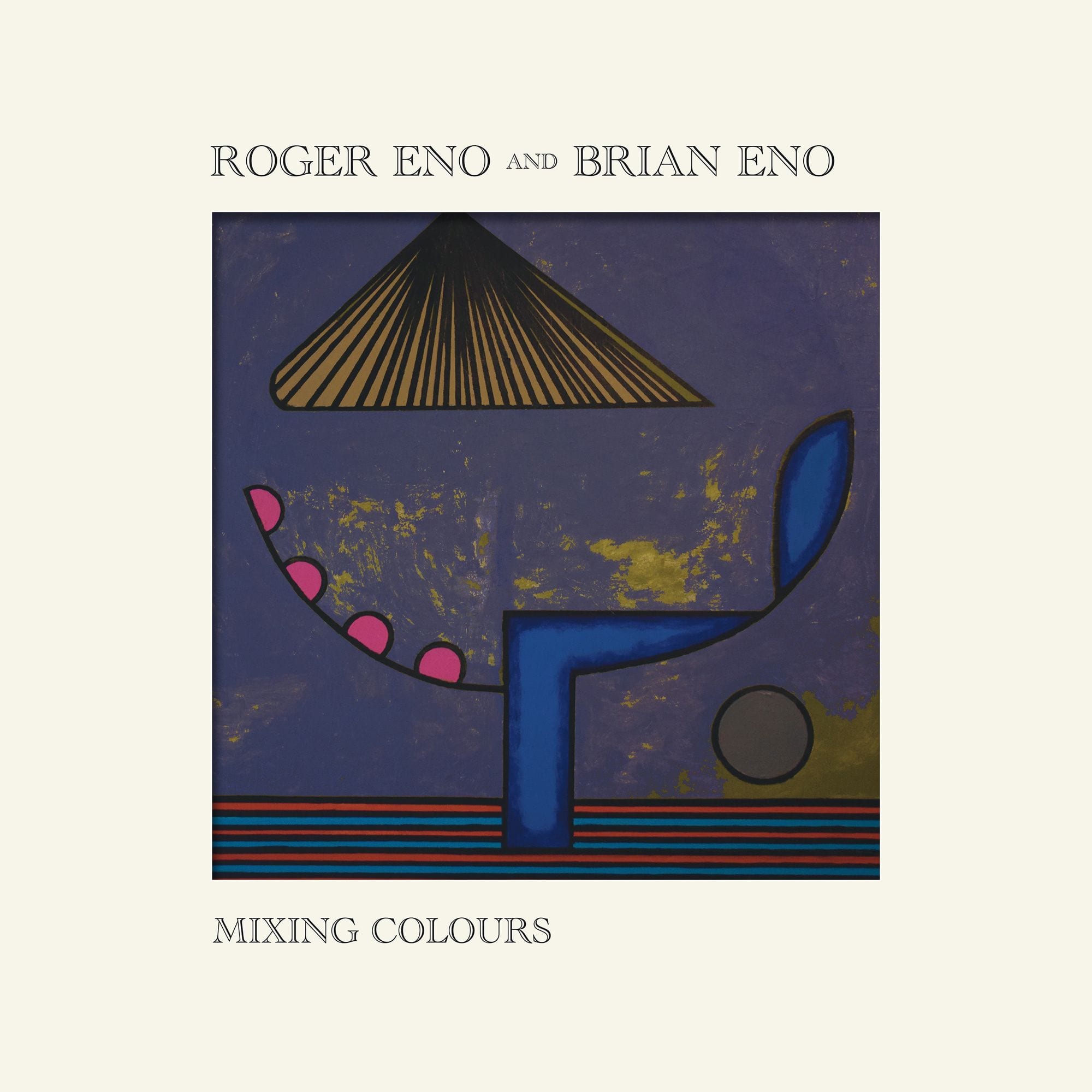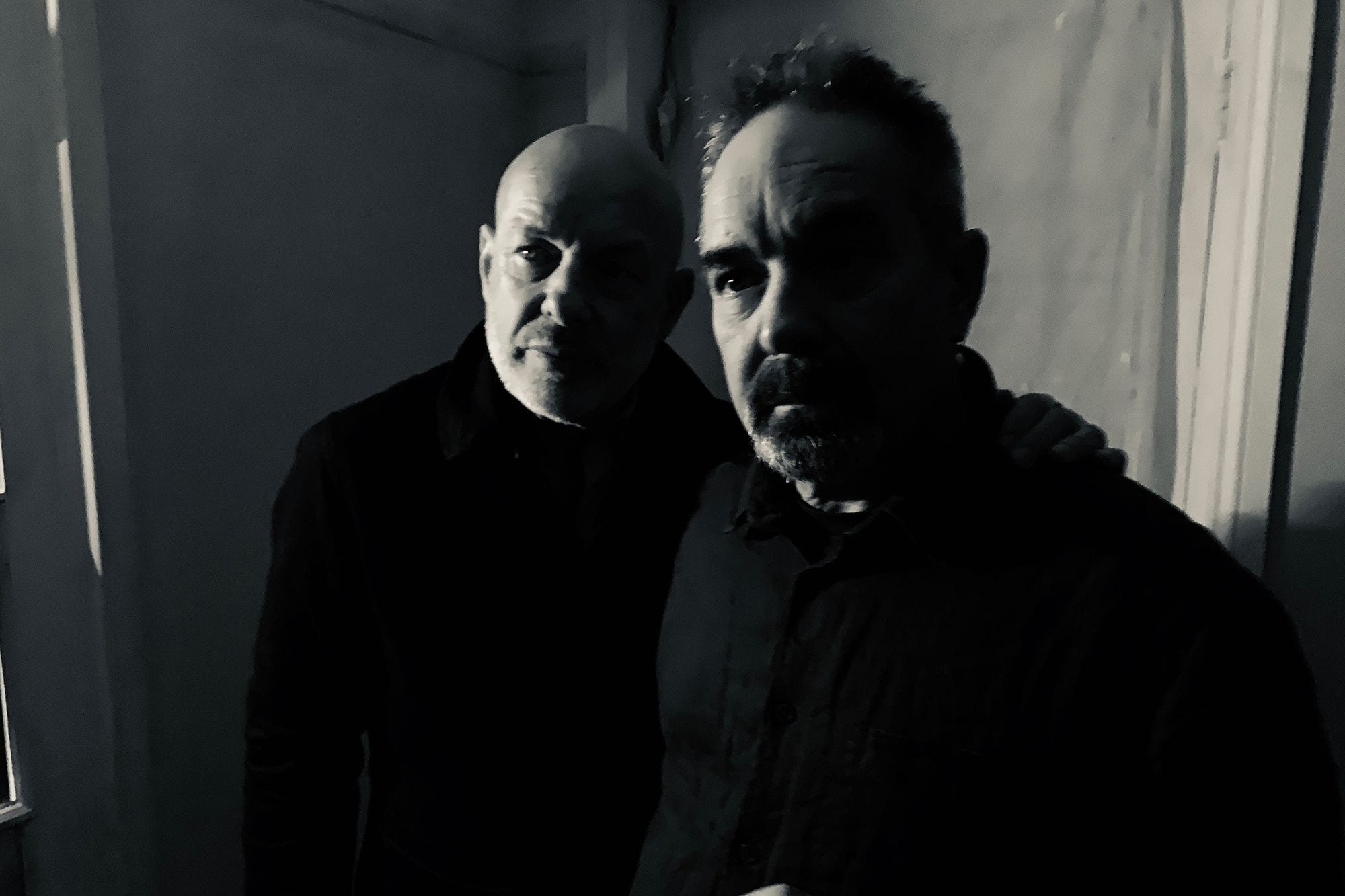
As a sound tinkerer and a leading pioneer of ambient music, Brian Eno has always been a musician widening spatiotemporal tonal boundaries to create exceptionally beautiful tapestries of sound. Heavily influenced by the transformative and cosmic sonority of some of his German contemporaries such as Tangerine Dream, Ash Ra Tempel, Cluster, Harmonia, or Popol Vuh he began his journey of exploring recreative sonic spaces in 1975 with Discreet Music. Three years later Brian Eno released his seminal album Ambient 1: Music For Airports coining the term ambient music in its liner notes by explicating that “an ambience is defined as an atmosphere or a surrounding influence: a tint”.
This definition perfectly sets the scene for his latest work Mixing Colours in which he collaborated with his younger brother, pianist Roger Eno, who is also a notable figure in ambient music. Both started working together in 1983 on Apollo: Atmospheres and Soundtracks for some compositions alongside with musician and producer Daniel Lanois. In return, Brian Eno and Daniel Lanois produced Roger’s 1985 debut album Voices. So it’s not the first time that the Eno brothers collaborate. But it is their first-ever duo album they created jointly as a whole.
In all 18 tracks on Mixing Colours, they explore the very nature of emotive music and invite listeners to immerse themselves in the infinite space and calmness of their tonal meditations. Like good wine, the material on the album grew over many years. The reciprocal creative process for Mixing Colours started back in 2005 with Roger recording individual synthesizer compositions and fragments of songs he then sent to Brian, who digitally decomposed his brother’s ideas and arranged them in new ways for giving each one its individual sound world. “We weren’t directing this towards an end result – it was like a back-and-forth conversation we were having over a 15-year period. […] The idea for a full album emerged as the number of pieces kept increasing, and the results kept being interesting. It’s something that neither of us could have arrived at alone,” says Roger recapitulating the album’s birth.
With its concept of color-related song titles, Mixing Colours offers a genuine collection of reflective and very introspective songs whose phantasmal but aesthetically pleasing atmosphere seems to resonate transcendental, Apollonian moods from far-away strange worlds. Contrasting its title, the album’s elegant opener “Spring Frost” immediately transports you in a prismatic cloud full of contemplation and relief. Roger and Brian carefully take their time to develop their complementing tonal language. Softly shimmering, layered keyboard notes and a harmonizing background ostinato melt together slowly in perfect harmony. Just like watching the color composition of a well-balanced painting, the long sounding notes give you the illusion of time being completely dissolved. This track nicely reflects the prevailing mood on Mixing Colours.
“Burnt Umber” unexpectedly features the sound of reverb-laden chimes echoing long into the acoustic space. Together with a sequenced bass ostinato, the track conveys a haunting mood that is absolutely incomprehensible. If there is an epitome of loveliness on the album, then it is the stunning and dreamy “Celeste“. Again, the Eno brothers exemplify masterly how to create magical compositions full of tranquility. There is a numinous quality in it when the song’s soft piano and keyboard melodies sprinkle some spots of sparkling colors on the atmospheric electronics. When listening to “Celeste”, you are instantly housed in a relaxing comfort zone of acoustic cotton wool. Thus, the track’s programmatic title referring to the Spanish word for sky-blue and everything related to the sky is well chosen.
Equally enlightening is “Obsidian”. Here, the journey continues solely with the sound of a church organ generating an almost reverential, spiritual feel by fusing the dichotomy between the sacred motet and the profane madrigal. The lucid shining piano solo pieces “Blonde“, “Dark Sienna”, “Snow”, and “Iris” (the only title not referring to a specific color) are outstanding examples of Roger’s overwhelming minimalism oscillating amongst Franz Schubert’s wistful melodic style and the romantic slowness of Erik Satie. Every note is placed carefully to achieve a maximum of transparent spatial impact. Although Roger is the primary musician in these relatively short pieces, they are full of references to Brian’s iconic works with Harold Budd.
“Verdigris” and “Cerulean Blue” basically utilize the same musical motifs as the opener “Spring Frost”. All of these subtle variations communicate a slightly different temper. Probably this is most recognizable in “Cerulean Blue” featuring a divine sounding carillon. This kind of sublime spacious quality also underpins tracks like “Quicksilver” and “Deep Saffron”, both unfolding as a musical rendering of freedom. Every time you follow these compositions, you will be rewarded with a different listening experience, always resulting in contemplative calmness. In this regard, Mixing Colours represents a refreshing antithesis of today’s accelerated times.
To underpin the calming effects of the music, Brian Eno produced a series of short films for seven out of 18 tracks in cooperation with musician and software designer Peter Chilvers. All films were shot from a train window, and all of them move softly with the music capturing its essence. Unsurprisingly, most parts of this album came into existence while traveling with trains. “I can sit there with my computer and headphones, and these pieces are absolutely perfect train music for me,” says Brian Eno.
All 18 compositions on Mixing Colours “are very impressionistic and very much to do with sonic quality, sonic color,” Brian adds. This kaleidoscope of colors, minimalistic sounds, and levitating textures result in a kind of imaginative synaesthesia constituting a deep feeling of oneness. The oceanic quality in this otherworldly music is always present. In this regard, Brian and Roger Eno’s Deutsche Grammophon debut represents a refreshing antithesis of today’s harsh and accelerated times.
- Brian Eno and Karl Hyde: Someday World (music review) - PopMatters
- Brian Eno and Karl Hyde: High Life - PopMatters
- Brian Eno - "The Ship" (Singles Going Steady) - PopMatters
- Brian Eno: Ambient 1: Music for Airports [reissue] - PopMatters
- Pure Imagination in 'Brian Eno: 1971-1977: The Man Who Fell to Earth'
- Brian Eno: LUX - PopMatters
- Jon Hassell and Brian Eno: Fourth World, Vol. 1: Possible Musics ...
- Brian Eno: Drums Between the Bells - PopMatters
- Brian Eno: Reflection - PopMatters
- Brian Eno: Small Craft on a Milk Sea - PopMatters

